The digital landscape has transformed dramatically, and nowhere is this more evident than in how startups, businesses, and brands approach customer acquisition. Every click represents a potential customer, but transforming those clicks into paying customers requires a sophisticated understanding of modern marketing funnels. As we navigate Q4 2025, the strategies that worked even a year ago are rapidly becoming obsolete, replaced by AI-driven personalization, non-linear customer journeys, and an unprecedented focus on customer experience.
The stakes have never been higher. With conversion rate optimization software projected to reach $5.07 billion by 2025 and businesses increasingly recognizing that optimized funnels are the difference between thriving and merely surviving, understanding how to build high-converting marketing funnels isn’t just beneficial—it’s essential for startups and established brands alike.
The Death of the Linear Funnel: Understanding the 2025 Customer Journey
Traditional marketing funnels followed a predictable path: awareness, interest, consideration, purchase. This linear model served businesses well for decades, but the reality of customer behavior in 2025 tells a different story. Today’s customers don’t move through stages in a neat, orderly fashion. They jump between touchpoints, conduct extensive research across multiple platforms, and make decisions in ways that defy traditional funnel logic.
Recent research from BCG reveals that marketers must move beyond linear funnel models to embrace what they call “influence maps”—a reimagining that reduces artificial barriers between stages and ensures the right level of customization throughout the customer journey. This shift acknowledges a fundamental truth: customers in Q4 2025 are spending more time browsing, waiting, and comparing before they buy, especially during the critical holiday season.
For startups and brands looking to build effective funnels, this means abandoning the idea of forcing customers through predetermined stages. Instead, successful businesses are creating fluid experiences that meet customers wherever they are in their journey, providing value at every touchpoint, and building trust through consistent, personalized interactions.
The Q4 2025 Landscape: What Makes This Quarter Different
Q4 has always been crucial for businesses, but 2025 presents unique opportunities and challenges. Consumer behavior has evolved significantly, with shoppers becoming more sophisticated, more cautious, and more demanding. They expect personalized experiences, immediate value, and seamless interactions across all channels.
The data reveals a striking trend: top-of-funnel performance feels soft early in Q4, and that’s actually okay. Brands that lean into awareness early and understand when to retarget are seeing the best results. This year, campaigns are hitting hard in November, not just December, with smart gadgets, health and beauty bundles, and lifestyle gifts leading the charge as consumers stock up earlier to avoid last-minute stress.
For startups and established brands alike, this means rethinking timing strategies. The businesses that build their funnels to capture early awareness and nurture those clicks throughout the quarter are the ones converting browsers into customers when purchase intent peaks.
Building Your Foundation: The Anatomy of a High-Converting Funnel
Before diving into tactics, let’s establish what makes a funnel truly high-converting in 2025. A successful funnel doesn’t just move people toward a purchase—it creates experiences that build trust, loyalty, and advocacy. Every element must work harmoniously to transform clicks into customers while providing value at each interaction.
Stage 1: Awareness – Capturing Quality Clicks
The awareness stage is where potential customers first encounter your brand. In Q4 2025, this stage requires a multi-channel approach that prioritizes quality over quantity. Every click matters, but not all clicks are created equal. Successful startups and brands are using sophisticated targeting to ensure that the traffic entering their funnel has genuine potential to convert into customers.
AI-powered advertising platforms have revolutionized how businesses capture attention. Platforms like Meta are using AI for enhanced personalization, creating curated feeds and ads that match user preferences with unprecedented accuracy. For businesses looking to build awareness, this means crafting ad creative and content that resonates deeply with specific audience segments rather than casting a wide net.
Content marketing remains crucial for capturing organic clicks. Video content has become particularly effective, with short-form video dominating social platforms and long-form content establishing authority. Businesses that build comprehensive content strategies—combining educational blog posts, engaging videos, and interactive experiences—are seeing significantly higher quality traffic entering their funnels.
Voice search is shaping nearly half of all online shopping experiences in 2025, which means optimizing for conversational queries is no longer optional. Startups and brands must build their content around natural language patterns, question-based keywords, and local search intent to capture these valuable clicks.
Stage 2: Engagement – Nurturing Interest and Building Trust
Once you’ve captured clicks, the next challenge is keeping potential customers engaged. This is where many funnels fail. Businesses spend significant resources driving traffic but neglect the crucial work of nurturing that traffic into warm leads who trust your brand enough to become customers.
Trust signals have become one of the biggest conversion rate optimization trends for 2025. Today’s market presents thousands of options, and users are discovering new brands constantly. If someone just found your brand for the first time, they need reasons to trust you before they’ll consider making a purchase. This means prominently displaying customer reviews, security badges, money-back guarantees, and social proof throughout your funnel.
Email marketing remains one of the most effective tools for engagement, but the approach has evolved. Generic newsletters no longer cut it. Successful businesses are building segmented email sequences that deliver personalized value based on how leads entered the funnel, what pages they’ve visited, and what problems they’re trying to solve. Each email should provide genuine value—educational content, exclusive insights, or special offers—that moves recipients closer to becoming customers.
Retargeting strategies have become more sophisticated. Rather than simply showing the same ad to everyone who visited your site, businesses are building dynamic retargeting campaigns that show different messages based on engagement level. Someone who spent five minutes reading your product comparison guide needs a different message than someone who bounced after viewing your homepage for 10 seconds.
Stage 3: Consideration – Removing Barriers to Conversion
The consideration stage is where potential customers evaluate whether your solution is right for them. They’re comparing options, calculating value, and identifying potential risks. Your job is to build a funnel experience that makes the decision as easy as possible while addressing every objection and concern.
Personalization can increase conversion rates by over 200%, according to recent studies. This isn’t just about using someone’s first name in an email—it’s about using behavioral data to recommend products, content, or actions based on previous interactions. For e-commerce businesses, this means showing product recommendations based on browsing history. For B2B startups, it means serving case studies relevant to the visitor’s industry and company size.
Website speed and user experience are non-negotiable in Q4 2025. With mobile e-commerce conversion rates averaging 2.89% and mobile cart abandonment at 85.65%, businesses must build mobile-optimized experiences that load instantly and make purchasing frictionless. Every additional second of load time costs customers.
Interactive elements like product configurators, ROI calculators, or augmented reality features are transforming how customers evaluate products. These tools allow potential customers to visualize value before purchasing, dramatically increasing consideration-stage conversion rates. Businesses that build these experiences into their funnels are seeing significant competitive advantages.
Stage 4: Conversion – Turning Clicks into Customers
This is the moment of truth—when a potential customer becomes an actual customer. Despite all the innovation in marketing technology, the average conversion rate across e-commerce businesses sits at about 3%, meaning for every 100 visitors, approximately three will make a purchase. The businesses that exceed this average understand that conversion optimization is a science requiring constant testing and refinement.
Checkout optimization has become critical. Cart abandonment remains stubbornly high, with mobile leading at 85.65%. Successful businesses are building streamlined checkout processes that reduce friction at every step. This means offering guest checkout options, providing multiple payment methods, being transparent about shipping costs upfront, and using progress indicators to show customers how close they are to completing their purchase.
Urgency and scarcity tactics, when used authentically, remain powerful conversion drivers. Limited-time offers, low-stock indicators, and exclusive deals create the psychological push many customers need to move from consideration to purchase. However, businesses must build these tactics on genuine scarcity rather than artificial manipulation, as savvy customers quickly recognize and resent false urgency.
Social proof at the point of purchase is crucial. Displaying recent purchases, customer reviews, and trust badges directly on product pages and checkout screens reassures hesitant customers. For B2B businesses, case studies and testimonials from recognizable brands serve the same purpose, providing the social validation needed to close deals.
Stage 5: Retention – Transforming Customers into Advocates
The funnel doesn’t end at purchase. In fact, customer acquisition costs continue to rise, making retention more valuable than ever. Businesses that build post-purchase experiences into their funnels see dramatically higher customer lifetime value and benefit from word-of-mouth marketing that brings in new customers at virtually no cost.
Email sequences triggered by purchase behavior keep customers engaged. Thank-you emails, onboarding sequences, usage tips, and replenishment reminders all serve to build relationships that extend beyond the initial transaction. Each touchpoint is an opportunity to deliver value and strengthen the customer relationship.
Loyalty programs have evolved beyond simple point systems. Successful brands are building tiered programs that reward not just purchases but also engagement behaviors like reviews, social shares, and referrals. These programs transform satisfied customers into active advocates who generate new clicks and customers through their networks.
Customer feedback loops are essential for continuous improvement. Businesses that build systematic processes for collecting and acting on customer feedback can identify friction points in their funnels and address them before they cost significant revenue. Post-purchase surveys, review requests, and feedback forms provide invaluable insights while also making customers feel heard and valued.
Leveraging Technology: Tools That Power High-Converting Funnels
Building a high-converting funnel in Q4 2025 requires the right technology stack. The tools you choose can dramatically impact your ability to capture clicks, nurture leads, and convert customers efficiently.
AI and Machine Learning
Artificial intelligence has moved from experimental to essential. AI streamlines marketing efforts and boosts customer satisfaction by over 25%. Businesses are using AI for predictive analytics, personalized recommendations, chatbot interactions, and automated optimization of ad campaigns.
For startups with limited resources, AI tools democratize capabilities that were previously available only to large enterprises. Platforms now offer AI-powered features for email marketing, ad optimization, content generation, and customer service, allowing smaller businesses to build sophisticated funnels without massive teams.
Marketing Automation Platforms
Modern marketing automation goes far beyond basic email sequences. Today’s platforms integrate with your entire technology stack, tracking customer behavior across touchpoints and triggering personalized actions based on that behavior. Businesses use these platforms to build complex nurture sequences, score leads based on engagement, and automatically segment audiences for targeted campaigns.
The key is choosing a platform that scales with your needs. Startups might begin with simpler tools but should build their funnels on platforms that can grow as their customer base expands and their strategies become more sophisticated.
Analytics and Attribution
Understanding which clicks lead to customers requires sophisticated analytics. Multi-touch attribution models show how different touchpoints contribute to conversions, allowing businesses to invest more in what works and eliminate what doesn’t. In Q4 2025, businesses successful at converting customers are obsessive about data, constantly testing hypotheses and refining their funnels based on what the numbers reveal.
Privacy regulations have made tracking more complex, but they’ve also forced businesses to build first-party data strategies that ultimately provide richer insights. By creating value that encourages customers to share information willingly, brands can build detailed profiles that enable truly personalized experiences.
Q4-Specific Strategies: Maximizing Holiday Season Performance
Q4 presents unique opportunities that businesses can leverage by building season-specific elements into their funnels. The holiday shopping season brings increased traffic and higher purchase intent, but also more competition and more demanding customers.
Early Awareness Campaigns
As consumer research shows, shoppers are browsing earlier and taking more time to compare options. Businesses that build awareness campaigns starting in October position themselves to capture these early researchers. Content marketing focused on gift guides, product comparisons, and holiday planning attracts these early-stage browsers and begins building the trust necessary for future conversion.
Strategic Promotion Timing
The traditional Black Friday/Cyber Monday approach is evolving. Successful businesses are building extended promotional periods that start in early November and run through Cyber Monday, with different offers at different times to create multiple opportunities for conversion. This approach caters to both early planners and last-minute shoppers, maximizing the total addressable market.
Gift Buyer Optimization
A significant portion of Q4 revenue comes from gift buyers—people purchasing for others rather than themselves. Businesses that build gift-specific features into their funnels see better conversion rates during this period. Gift wrapping options, personalized messaging, gift receipts without prices, and easy returns all remove friction for gift purchasers who may be less familiar with your products.
Last-Minute Buyer Tactics
Despite the trend toward earlier shopping, last-minute buyers remain a significant segment. Businesses should build specific funnel elements for this audience, including clear shipping deadline communication, express shipping options, digital gift cards for those who miss shipping cutoffs, and in-store pickup options where available.
Testing and Optimization: The Never-Ending Journey
Building a high-converting funnel isn’t a one-time project—it’s an ongoing process of testing, learning, and refining. The businesses that consistently outperform competitors are those that treat their funnels as living systems requiring constant attention and optimization.
A/B Testing Fundamentals
Recent analysis of 30+ different marketing funnels reveals a critical insight: many funnels have too many steps, and this kills conversions. Every additional step in your funnel represents a potential exit point. Successful businesses test ruthlessly to identify and eliminate unnecessary friction.
Start with high-impact elements. Test headlines, call-to-action buttons, form fields, pricing presentation, and social proof placement. These elements often have outsized impacts on conversion rates. Small changes—like changing a button color or reducing form fields from 10 to 5—can produce significant improvements in how many clicks convert to customers.
Continuous Improvement Framework
Build a systematic approach to optimization. Review funnel analytics weekly, identify the biggest drop-off points, form hypotheses about why customers are leaving, design tests to validate those hypotheses, and implement winning variations. This cycle should never stop—there’s always room for improvement in how efficiently your funnel converts clicks to customers.
Document everything. Maintain a testing log that records what you tested, why you tested it, what the results were, and what you learned. Over time, this knowledge base becomes invaluable, helping you build better hypotheses and avoid repeating tests that didn’t work.
Learning from Data
The most successful businesses in Q4 2025 are data-obsessed but not data-paralyzed. They collect extensive data about how customers move through their funnels, but they also trust their instincts and move quickly to implement improvements. The key is finding the balance between waiting for statistical significance and acting on strong signals quickly enough to capitalize on opportunities.
Segment your analysis to understand how different customer types behave. Your funnel might perform well overall but have significant weaknesses for mobile users, or for customers from certain traffic sources, or for specific product categories. By building segment-specific analyses, you can identify and address these specific issues rather than making broad changes that might help some segments while hurting others.
Common Mistakes That Kill Conversions
Even experienced marketers make mistakes that undermine their funnels’ effectiveness. Being aware of these common pitfalls helps you build stronger funnels from the start and diagnose issues when conversion rates don’t meet expectations.
Overcomplicating the Journey
The complexity trap ensnares many startups and businesses. They build elaborate funnels with multiple steps, extensive forms, and numerous decision points, thinking that more touchpoints mean more opportunities to sell. The opposite is usually true. Every additional step reduces conversion rates. The businesses that build the simplest possible path from awareness to purchase typically see the highest conversion rates from clicks to customers.
Ignoring Mobile Experience
With mobile conversion rates at 2.89% and mobile cart abandonment at 85.65%, neglecting mobile optimization is essentially throwing away half your potential customers. Yet many businesses still build desktop-first experiences and treat mobile as an afterthought. In Q4 2025, mobile must be the primary consideration when building your funnel. Test everything on actual mobile devices, not just desktop browsers with narrowed windows.
Weak Value Propositions
Many businesses fail to clearly articulate why customers should choose them over competitors. Your value proposition should be immediately clear at every funnel stage. Customers shouldn’t have to dig through pages of content to understand what you offer, why it matters, and why they should choose you. Build clear, compelling value propositions into every page, every email, and every ad.
Neglecting Speed
Website speed directly impacts conversions, yet many businesses build slow, bloated sites filled with unnecessary scripts and unoptimized images. Every second of delay costs customers. Google’s research consistently shows that bounce rates increase dramatically as page load time increases. If you want to convert more clicks to customers, build fast websites.
Poor Follow-Up
Many businesses pour resources into capturing clicks but fail to build adequate follow-up mechanisms. Someone who doesn’t convert on their first visit isn’t a lost cause—they’re a warm lead who needs more nurturing. Build robust retargeting campaigns, email sequences, and content marketing strategies that continue providing value and bringing people back to your funnel until they’re ready to become customers.
Case Study Examples: What High-Converting Funnels Look Like
While specific tactics vary by industry and business model, examining what successful businesses are doing reveals patterns that startups and brands can emulate when building their own funnels.
E-Commerce Excellence
Top-performing e-commerce brands are building frictionless experiences that anticipate customer needs. They use AI-powered product recommendations to show relevant items based on browsing behavior. They implement one-click checkout options for returning customers. They provide detailed product information, multiple high-quality images, customer reviews, and video demonstrations. They offer multiple payment options including buy-now-pay-later services. And critically, they build trust through prominent security badges, clear return policies, and responsive customer service.
These brands understand that every click represents someone who’s interested—their job is simply to remove every possible barrier between that interest and a purchase. By building streamlined funnels that prioritize user experience above all else, they consistently convert at rates well above industry averages.
B2B Success Stories
B2B funnels face different challenges than B2C, with longer sales cycles, multiple decision-makers, and higher-value transactions. Successful B2B businesses build educational content that establishes authority and helps potential customers understand their problems and evaluate solutions. They use content gating strategically to build email lists without creating friction for genuinely interested prospects. They implement lead scoring to identify when leads are ready for sales outreach rather than blasting everyone with sales messages immediately.
Their funnels acknowledge the complex nature of B2B purchasing decisions by providing resources for different stakeholder types—technical documentation for technical evaluators, ROI calculators for financial decision-makers, and case studies for executive champions. By building resources for each constituency, they help internal advocates sell the solution within their organizations.
Service-Based Business Models
Service businesses face unique challenges in converting clicks to customers because their product is intangible. The most successful service providers build trust through content that demonstrates expertise, such as comprehensive guides, webinars, podcasts, and tool resources. They offer low-friction initial engagements like free consultations or audits that allow potential customers to experience working with them before making financial commitments.
Their funnels focus heavily on social proof, featuring detailed case studies, client testimonials, and results metrics that prove their ability to deliver outcomes. They build credibility through credentials, certifications, association memberships, and media features. And they make it extremely easy to take the next step, with clear calls-to-action and simple booking systems that eliminate scheduling friction.
Future-Proofing Your Funnel: Preparing for What’s Next
The marketing landscape continues evolving rapidly. Businesses that build adaptable funnels positioned to leverage emerging technologies and shifting consumer behaviors will maintain competitive advantages regardless of how the market changes.
Embracing Emerging Technologies
Augmented reality is transforming how customers interact with products, elevating user experience and helping them visualize items in their own spaces before purchasing. Businesses that build AR experiences into their funnels see reduced return rates and higher customer satisfaction. Voice commerce continues growing, requiring businesses to optimize for voice search and build voice-enabled purchasing capabilities.
AI will continue advancing, offering increasingly sophisticated personalization and automation capabilities. Businesses should build their funnels on platforms that integrate with AI tools and stay current with emerging AI applications in marketing, customer service, and sales.
Privacy-First Strategies
Privacy regulations continue tightening globally. Businesses must build their funnels on first-party data strategies that don’t rely on third-party cookies or tracking mechanisms that may become unavailable. This means creating sufficient value that customers willingly share information in exchange for personalized experiences.
Transparency about data usage builds trust. Businesses should clearly communicate what data they collect, how they use it, and what benefits customers receive in exchange. Far from being a burden, privacy-focused approaches can become competitive advantages as consumers increasingly value brands that respect their data.
Sustainability and Values
Consumer values are shifting, with more customers making purchase decisions based on brand values and sustainability practices. Businesses should build their brand stories into their funnels, clearly communicating their values, sustainability initiatives, and social impact. This isn’t just about appealing to conscious consumers—it’s about building authentic brands that create meaningful connections with customers.
Conclusion: From Clicks to Customers and Beyond
Building high-converting marketing funnels in Q4 2025 requires understanding modern customer behavior, leveraging appropriate technology, optimizing relentlessly, and creating genuine value at every touchpoint. The businesses that excel—whether startups just beginning or established brands refining their approaches—are those that view funnels not as mechanical processes but as customer experiences that build relationships and trust.
Every click represents a person with needs, questions, and concerns. Every customer started as a stranger who somehow discovered your brand. Your funnel is the bridge between awareness and advocacy, between clicks and loyal customers who not only purchase but enthusiastically refer others to your business.
As you build and refine your funnel for Q4 and beyond, remember that the goal isn’t just conversion—it’s creating experiences so valuable that customers want to return, recommend, and remain engaged with your brand for years to come. The businesses that build with this mindset don’t just convert more clicks to customers; they build sustainable competitive advantages that compound over time.
The tools, strategies, and tactics outlined in this guide provide a comprehensive framework for building high-converting funnels. But frameworks are just starting points. Your specific audience, industry, and business model require customization and testing to determine what truly works. Build boldly, test constantly, learn continuously, and never stop optimizing. Your customers are out there, searching for solutions you provide. Your job is to build funnels that guide them from those initial clicks to becoming valued customers and enthusiastic advocates for your brand.
References and Further Reading
- Digital Position – The Official eCommerce Marketing Playbook For Q4 2025
- Business of Apps – The Trends Defining Q4 Digital Marketing
- Boston Consulting Group – It’s Time for Marketers to Move Beyond a Linear Funnel
- Medium – I A/B Tested 30+ Different Marketing Funnels, Here’s What Actually Works in 2025
- The Diamond Group – What Is The Modern Digital Marketing Funnel In 2025
- VWO – 43 Conversion Rate Optimization Statistics 2025
- DemandSage – 55 Conversion Rate Optimization (CRO) Statistics 2025
- WordStream – 19 Conversion Rate Optimization Statistics for 2025
- Shopify – CRO Statistics: 34 Vital Conversion Rate Optimization Stats (2025)
- WebFX – The Conversion Rate Optimization Trends Defining 2025 & 2026
- Fermat Commerce – 10 Conversion Rate Optimization Best Practices for 2025
- Instant – Ecommerce Marketing Funnel Guide 2025: Trends and Tactics
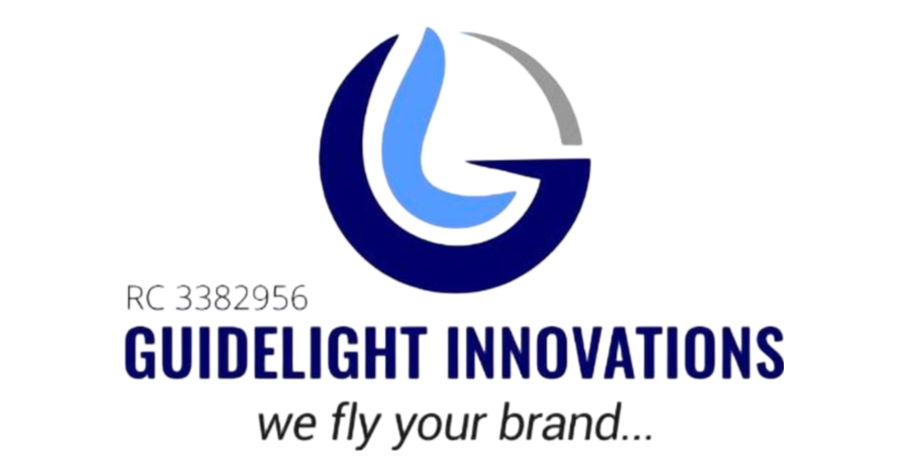
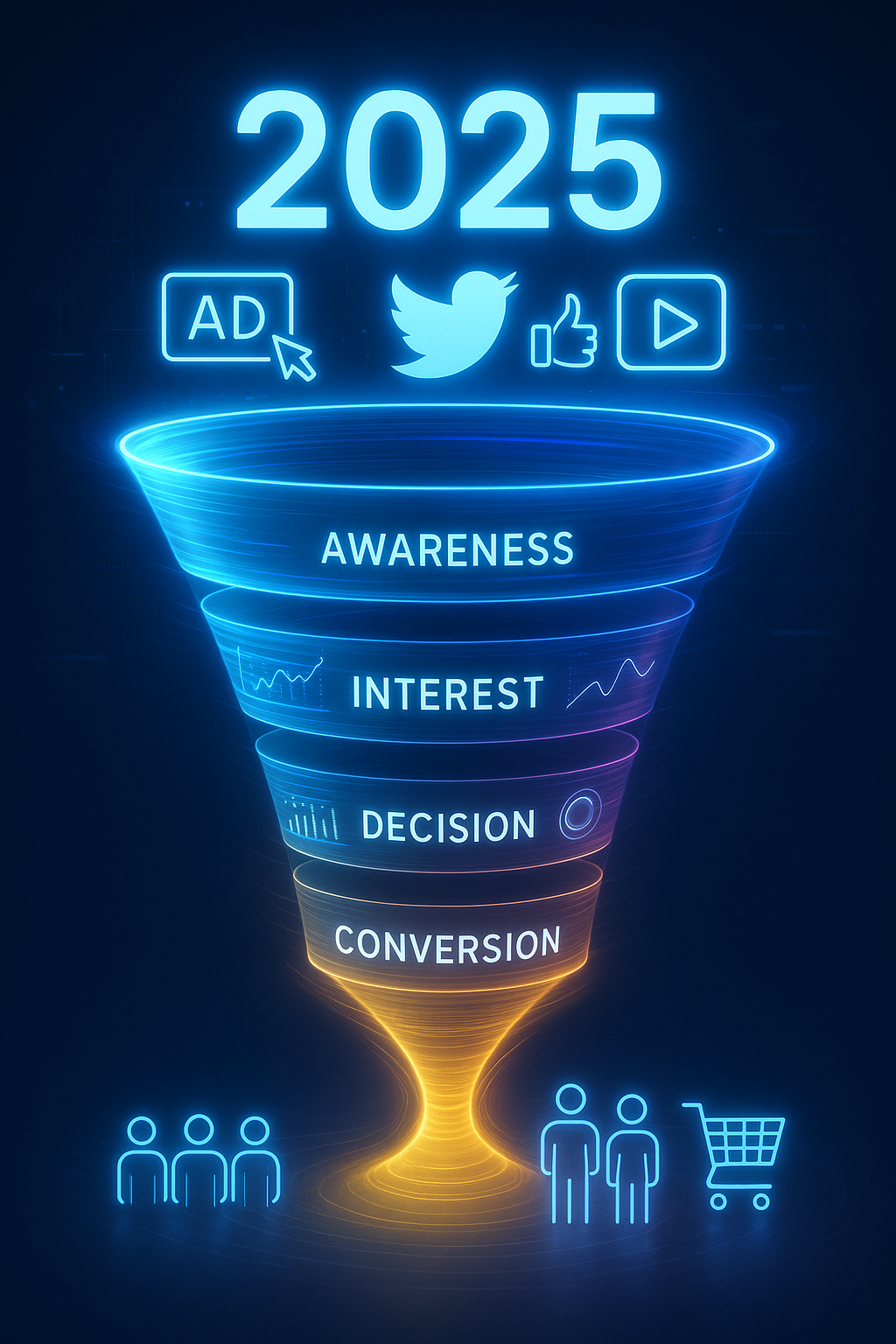
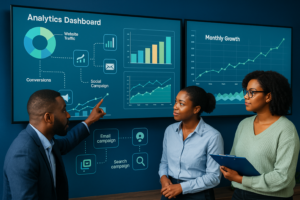
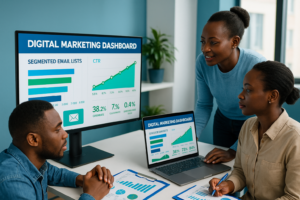
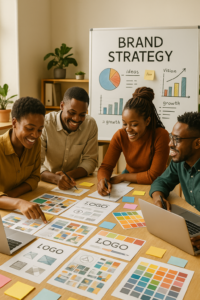
Pingback: The Digital Marketing Blind Spot Costing You Customers | Outthink Competitors